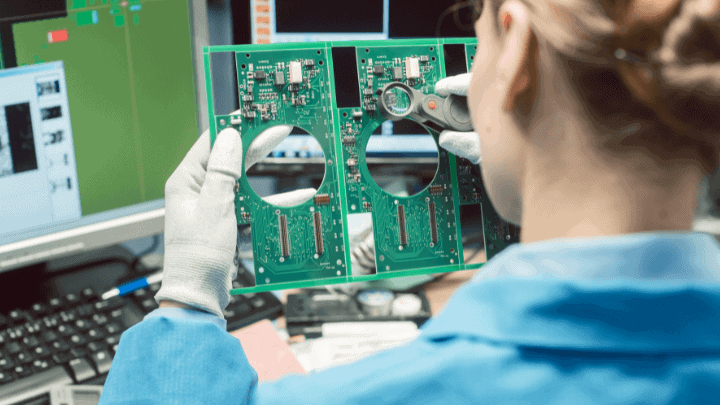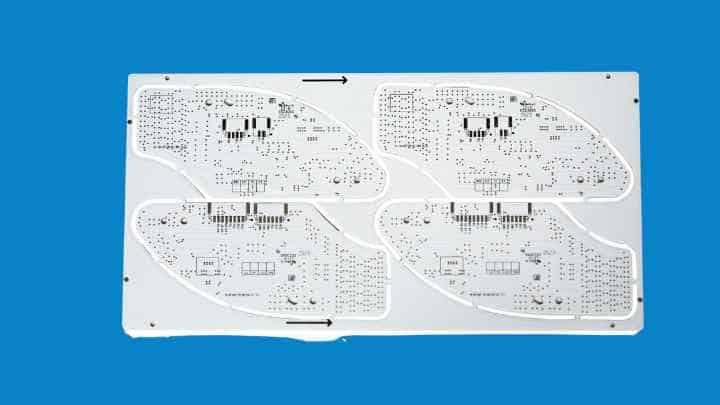Mastering PCB Quality Control: A Comprehensive Guide
In today’s tech-driven world, printed circuit boards (PCBs) are the backbone of countless electronic devices, from smartphones to laptops and everything in between. In this full tutorial, we deep into the world of PCB Quality Control. Discover the essential techniques and insider secrets to ensure top-notch PCB projects. Ensuring the quality of these PCBs is paramount to the performance and reliability of the devices they power. In this comprehensive guide, we will delve into the intricacies of PCB quality control, providing you with insights and techniques to guarantee the highest standards in electronic manufacturing.

Understanding the Importance of PCB Quality Control
PCB quality control is the process of inspecting and testing every stage of PCB manufacturing to identify and rectify defects. This ensures that the final product meets performance expectations and complies with industry standards. High-quality PCBs are crucial for the following reasons:
- Reliability: Quality control guarantees that the PCBs can withstand environmental factors and continue to function as intended.This is the fundation of long time relationship for business.Reliable products are essential in industries like healthcare, automotive, and aerospace. PCB inspection for quality control guarantees that electronic devices perform flawlessly when needed the most.
- Performance: Well-made PCBs contribute to the overall performance of electronic devices.PCBs are often referred to as the “heart” of electronic devices, and for good reason. These intricate boards serve as the central nervous system of electronics, facilitating the flow of electricity and data between various components. Any flaw or defect in a PCB can have far-reaching consequences, impacting both the device’s functionality and the end user’s experience.
- PCB Cost Savings: Detecting and dealing PCB defects early in the manufacturing process saves time and resources. Every electronic manufacturing company would like to make products benifits maximization and minimize costs associated with rework, recalls, and warranty claims.learn How to Save PCB Manufacturing Costs 20 Essential Tips
- Compliance: Meeting industry standards and regulations is essential for market acceptance.In many industries, such as healthcare and aerospace, electronic devices must adhere to stringent regulatory standards. PCB quality control is a fundamental step in ensuring compliance with these standards, preventing legal issues and regulatory penalties.
PCB Quality Depend on The Raw PCB Material
Electrical Performance: The choice of raw materials, especially the substrate material (often FR4 PCBs ), has a significant impact on the electrical performance of the PCB. The dielectric constant, dissipation factor, and other electrical properties of the substrate material directly affect signal integrity, impedance control, and the overall functionality of the PCB. Using high-quality materials that meet or exceed specifications is essential for achieving optimal electrical performance.
Manufacturability: PCB raw materials influence the ease of manufacturing and assembly. Different materials may have varying properties, such as thermal conductivity and coefficient of thermal expansion (CTE). Proper material selection ensures that the PCB can be manufactured without issues like warping, delamination, or soldering problems. This, in turn, contributes to the efficiency of the manufacturing process and reduces the likelihood of defects.
Signal Integrity: The dielectric properties of the substrate material affect signal integrity by controlling signal propagation speed and impedance matching. Using materials with consistent and reliable dielectric properties is critical for maintaining signal integrity and minimizing signal distortion, which is crucial for high-frequency and high-speed
Thermal Management: PCBs often generate heat during operation, especially in power electronics and high-performance applications. The thermal conductivity of the raw materials influences the PCB’s ability to dissipate heat effectively. Proper material selection can help manage heat, prevent thermal hotspots, and extend the lifespan of electronic components.
Solderability: The surface finish of the raw materials, such as copper foils, impacts solderability. Inconsistent or low-quality surface finishes can lead to soldering defects like poor wetting, solder bridges, or tombstoning. High-quality surface finishes and copper foils promote reliable soldering, which is critical for the assembly process.
Finest printed circuit board as a professional PCB manufacture with 20 years old, We attach great importance to the selection of raw materials, and have established many years of partnership with a number of brand PCB material manufacturers to ensure the control of source quality. This brand PCB material include Isola, Shengyi, Rogers, Huazheng, Lianmao, Nilco, Arlon, KB.
Check for PCB Design Manufacturability (DFM) before Production
Ensure that components are placed in a way that minimizes signal interference, allows for efficient routing, and complies with design rules. Set appropriate trace widths and spacing to meet the electrical and manufacturing requirements, considering factors like current-carrying capacity and impedance.
Select an optimal layer stackup that balances the electrical and mechanical requirements of the design, such as signal integrity and thermal management. Design vias and pads with appropriate sizes and clearances to ensure reliable soldering and electrical connections. Establish clear design rules for your PCB layout to prevent manufacturing errors and ensure compliance with industry standards.
Have all design files, including schematics, layouts, and Gerber files, been reviewed thoroughly for accuracy and adherence to design rules, By addressing these questions and conducting thorough quality control checks at each stage of the PCB manufacturing process, engineers can help ensure that the final product meets high-quality standards and performs reliably in its intended application.
Key PCB Quality Standards and Certifications
IPC Standards (Institute for Printed Circuits)
IPC-A-600: Acceptability of Printed Boards: This standard provides comprehensive visual criteria for the acceptance of PCBs. It covers various aspects, including:
- Surface conditions
- Conductor width and thickness
- Hole quality and plating
- Solderability
- Annular ring requirements
- IPC-A-600 is widely used by PCB manufacturers and assemblers to ensure that the boards meet acceptable quality standards.
IPC-A-610: Acceptability of Electronic Assemblies: This standard focuses on the acceptability criteria for electronic assemblies, including PCB assembly. It defines the requirements for solder joints, component placement, cleanliness, and other critical aspects of PCB assembly quality.
ISO Standards (International Organization for Standardization)
ISO 9001: Quality Management System: ISO 9001 is a globally recognized standard for establishing and maintaining a quality management system (QMS). PCB manufacturers that are ISO 9001 certified demonstrate their commitment to delivering consistent and high-quality products. This standard covers processes such as design, production, and customer service.
ISO 14001: Environmental Management System: ISO 14001 is an environmental management standard. While it doesn’t directly address PCB quality, it ensures that PCB manufacturing processes consider environmental aspects and impacts, promoting sustainable practices in the industry.
UL (Underwriters Laboratories) Certification
UL 796: Safety Standard for Printed Wiring Boards: This standard assesses the safety compliance of materials used in PCB manufacturing. It includes criteria related to flammability ratings, electrical characteristics, and other safety factors
RoHS (Restriction of Hazardous Substances)
RoHS Directive 2011/65/EU: RoHS restricts the use of hazardous substances in electrical and electronic equipment, including PCBs. Compliance ensures that PCBs are free from substances like lead, mercury, and cadmium, contributing to environmental protection and safety.
REACH Regulation (Registration, Evaluation, Authorization, and Restriction of Chemicals)
REACH Regulation (EC) No 1907/2006: REACH addresses the use of chemicals in PCB manufacturing. Compliance with REACH ensures that PCBs are produced using safe and environmentally responsible processes and materials.
Methods for PCB Inspection
Visual Inspection
Visual inspection is a fundamental quality control process in the manufacturing of printed circuit boards (PCBs). It involves a meticulous examination of the PCB’s physical components and solder connections using the human eye or automated systems. Visual inspection plays a crucial role in ensuring the quality and reliability of PCBs
PCB Automated Optical Inspection (AOI)
AOI systems capture high-resolution images of the PCB, including both sides. AOI systems detect various types of defects, including Detects missing, misaligned, or incorrectly oriented components, identifies issues such as solder bridges, cold solder joints, and insufficient solder, and verifies that the correct components are used according to the bill of materials (BOM).
Manual visual inspection is a hands-on process where trained inspectors visually examine PCBs for defects. It serves as the first line of defense against common manufacturing issues, ensuring the integrity of the PCB assembly.
Importance for PCB Automated Optical Inspection
- Ensures the reliability and functionality of electronic devices.
- Reduces the risk of defects, which can lead to product failures in the field.
- Enhances the overall manufacturing process efficiency by automating inspection tasks.
- Saves time and reduces labor costs compared to manual inspection methods.
AOI is used to inspect and verify the correctness of PCB assembly, including the placement and soldering of components. It is employed to identify defects and anomalies that may occur during the manufacturing process, ensuring the highest level of product quality.
X-ray Inspection
- Purpose and Benefits of X-ray Inspection
X-ray inspection is invaluable for identifying defects within the PCB, such as hidden soldering issues or concealed short circuits. It provides a deeper level of scrutiny. - X-ray Inspection Equipment
Specialized X-ray machines are used to perform this type of inspection, ensuring precise and detailed imaging.
In-Circuit Testing (ICT)
ICT is used to check the integrity of individual components and their connections on the PCB. It verifies the functionality of the PCB’s electronic components, such as resistors, capacitors, and integrated circuits, and identify component value discrepancies, incorrect orientations, or soldering defects.
Flying Probe Testing
Flying probe testing is a non-invasive method used for PCBs that do not have test points or require rapid testing. It checks the connectivity and functionality of the PCB without the need for custom fixtures. it is ideal for low to medium volume production.
Boundary Scan Testing
Boundary scan testing is designed to assess the digital components on the PCB. It checks the functionality of devices with built-in boundary scan cells (JTAG). It is helpful for boards with complex digital components like FPGAs and microcontrollers



